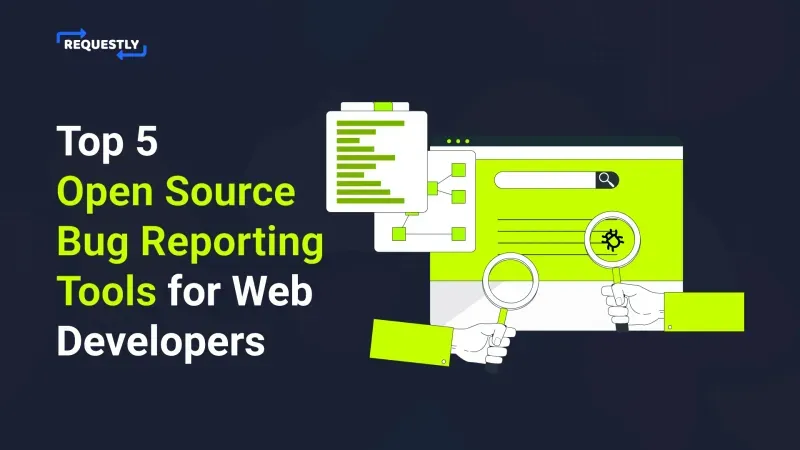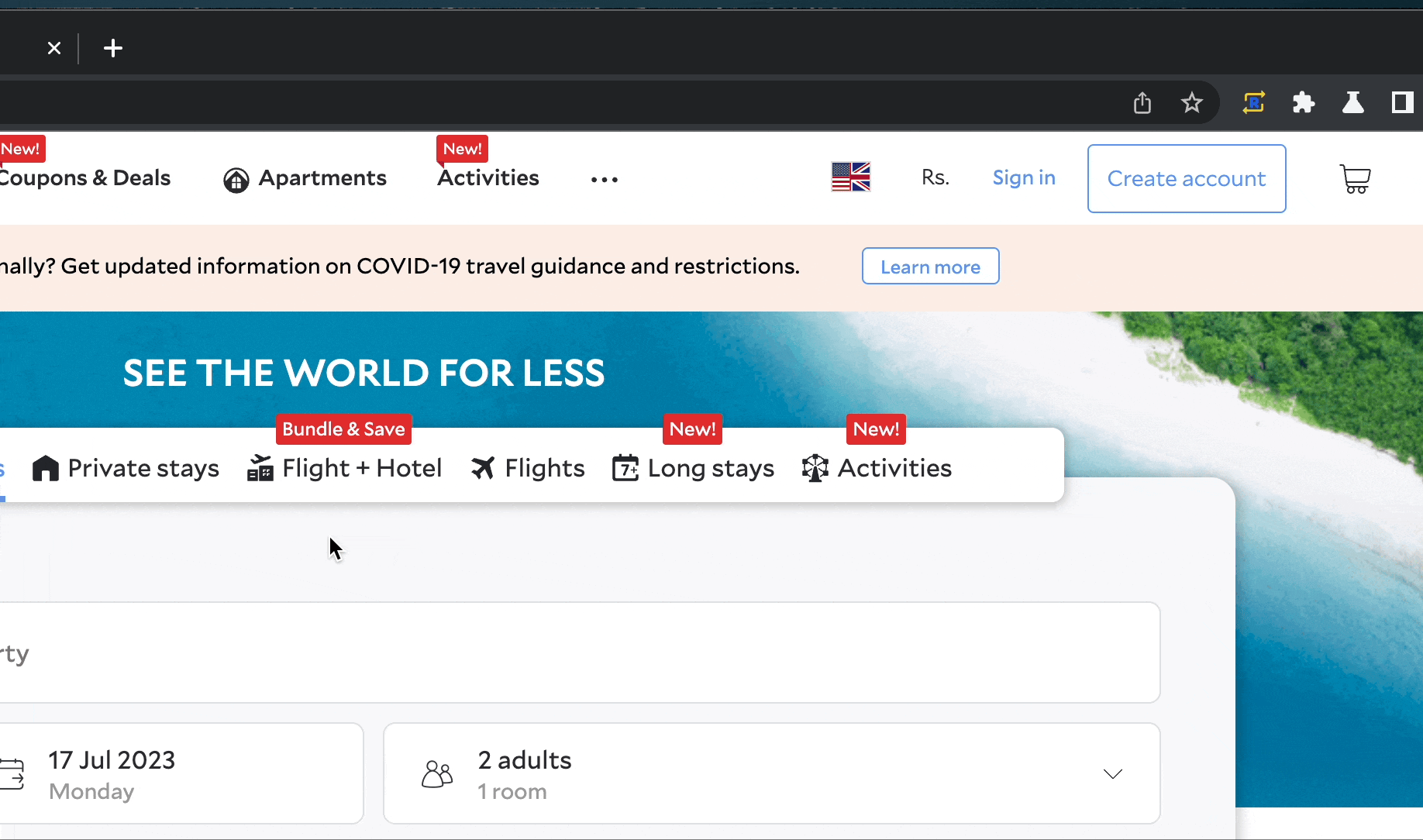Top 5 open-source bug reporting tools for web developers
 Requestly
Requestly
In the landscape of software development, bugs are inevitable. However, an effective bug reporting system is crucial to ensuring that these glitches are swiftly addressed and resolved. Bug tracking tools emerged as a powerful aid in this process, providing developers with streamlined workflows and enhanced collaboration. This blog explores some of the best open-source bug reporting tools and highlights how Requestly Sessions can be integrated to capture bugs more efficiently.
Bugzilla: Efficient Issue Management Ecosystem
Bugzilla transcends the boundaries of conventional bug tracking, evolving into a comprehensive issue management system that caters to the entire spectrum of challenges developers face.
Features
While offering the familiarity of a basic Google-like search for new users, Bugzilla boasts a powerful advanced search system. This advanced system is akin to having your personal detective capable of crafting intricate searches based on time, specific queries, and even bug history. Scheduled reports via email deliver timely updates, enhancing communication. The reporting system generates insightful tables, graphs, and charts, aiding in database analysis.
Bugzilla also excels in time tracking, duplicate bug detection, email-based bug filing and modification for controlled collaboration. Furthermore, Bugzilla’s security measures, extension mechanism, custom fields, customizable workflow, full Unicode support, and localization capabilities contribute to its adaptability to diverse project needs.
Integration
Bugzilla’s seamless integration with various Addons and version control systems transforms it into a versatile tool that can adapt to the unique setup of your development environment. This means that the existing infrastructure remains intact, while Bugzilla enhances the tracking and resolution of issues. Bugzilla’s integration capabilities extend to a wide range of tools and systems, making it a powerful hub for managing your development workflow.
MantisBT: Keeping It User-Friendly Yet Powerful
MantisBT stands as the embodiment of the saying, “Simplicity is the ultimate sophistication.” While presenting an inviting and user-friendly interface, it doesn’t sacrifice the depth and breadth of its capabilities.
Features
Beneath the welcoming exterior of Mantis Bug Tracker lies a formidable bug-tracking powerhouse. MantisBT’s simplicity is strategic, keeping the focus on the efficient tracking of bugs. Its intuitive layout ensures that developers spend more time addressing issues and less time navigating the complexities of the tool. including seamless collaboration between team members and clients.
Receive email notifications for issue updates and changes, ensuring real-time awareness. Control access levels based on roles and customize fields and notifications for tailored workflows. The dashboard provides an instant overview while release management and time tracking streamline processes.
Integration
MantisBT’s integration capabilities extend to well-known version control systems like Git and Subversion. This integration not only simplifies collaboration but also streamlines the development workflow by seamlessly linking bug tracking with the version control process. With over 100 add-ins, MantisBT connects effortlessly to various tools for enhanced productivity. Integrate with Slack, HipChat, GitHub, and BitBucket for seamless communication and customer support.
Redmine: Bridging Bug Tracking and Project Management
Redmine emerges as more than just a bug-tracking tool and evolves into a dynamic project management hub, offering a comprehensive suite of tools to tackle diverse challenges. It not only excels in bug tracking but also transforms into a platform for collaborative planning, documentation, and progress tracking.
Features
Redmine’s adaptability makes it a standout. Redmine encompasses a range of robust features designed to enhance project management and collaboration. The platform supports multiple projects and users, offering flexible role-based access control for tailored permissions. Subprojects can be managed alongside main projects, while a versatile issue-tracking system enables customized statuses, issue types, and workflow transitions.
Gantt charts and calendars automatically adapt based on issue start and due dates. This flexibility extends to customizing the tool according to your team’s workflow, ensuring every aspect aligns with your project’s needs.
Integration
Redmine’s integration capabilities include platforms like Git and Mercurial. By centralizing project management and bug tracking, Redmine becomes a nexus of collaboration; Redmine’s third-party tool integrations span various domains to enhance functionality and workflow. From IDE integrations to VCS integrations.
Mobile apps like Redminer for both iOS and Android enable remote work monitoring, browser extensions like Redmine Timer facilitate time management, and web applications like Taco and Honeybadger enrich the platform’s capabilities. With Redmine’s broad integration support, teams can seamlessly connect Redmine with tools that fit their project management needs.
Trac: Integration Excellence for Agile Environments
Trac plays the role of a bridge, seamlessly connecting bug tracking with version control systems. Its lightweight nature and focus on integration make it a valuable asset for agile teams. This simplicity ensures that developers can efficiently monitor bugs while keeping the development process flexible.
Features
Trac’s lightweight design is a strategic choice that caters to the agility of modern development. It doesn’t overwhelm users with a barrage of features but instead narrows its focus on effective bug tracking. Trac offers a streamlined project management approach, tightly integrating ticket tracking, version control, and wiki systems.
The ticket system covers diverse tracking needs, like bugs and tasks, with customizable SQL queries for reports. Trac’s secure permission system and search engine add robustness. It supports milestones, visual roadmaps, and timely notifications via email, RSS, or iCalendar feeds.
Integration
Trac’s strength lies in its plugin ecosystem, offering optional features and integrating with external tools while keeping the core user-friendly. seamless integration of wiki systems with ticket tracking and version control allows easy cross-referencing and information sharing. Trac’s adaptability comes from its diverse plugin ecosystem; these plugins enhance Trac’s capabilities, including user administration, multi-project support, spam filtering, blog/forum integration, guestbook management, and Pastebin functionality.
XML-RPC facilitates interaction with external apps, the Tags plugin aids in keyword management, and continuous integration plugins extend compatibility with different workflows.
Fossil: Unifying Version Control and Bug Tracking
Fossil emerges as a holistic solution, transcending the boundaries of mere bug tracking. By combining version control and bug tracking, it simplifies the development landscape.
Features
Fossil presents a robust, distributed software configuration management system, blending bug tracking seamlessly. It introduces a “ticket” system for reporting bugs, which are treated separately from code check-ins. Unlike some other systems, Fossil employs a web interface for ticket management and supports internet users in creating tickets, avoiding the need for check-in privileges.
Ticket-related artefacts are distinct from code check-ins, ensuring immutability and better management. A special format is assigned to Ticket Change Artifacts, linked to each ticket, enabling multiple modifications and historical tracking.
Integration
Fossil’s integrated approach eliminates external dependencies, providing developers with a self-sufficient solution for version control and bug tracking. Fossil goes beyond bug tracking, offering version control, wiki, forums, and more. Its built-in web interface is intuitive and extensible. Hosting this website itself, Fossil is an all-in-one solution in a single executable. It’s self-hosting friendly, efficient, and works over various networks. The “auto sync” mode reduces forking and merging hassles. With robust storage in an SQLite database, Fossil ensures reliability. It’s open-source under a BSD license.
Each of these bug-tracking tools brings its unique flavour to the table, catering to various team sizes, project complexities, and preferences. Whether you’re seeking customization, simplicity, comprehensive project management, integration, or an all-in-one solution, there’s a tool among Bugzilla, MantisBT, Redmine, Trac, and Fossil that fits your needs like a glove.
Combining Requestly Session Replays with Bug Reporting Tools
Imagine if capturing bugs became as simple as snapping your fingers. Well, almost. Let’s dive into the world of Requestly Session Replays, where bug capturing and reproduction reach new levels of efficiency. By integrating this ingenious tool with your preferred bug-reporting software, you can seamlessly capture, analyze, and recreate bugs with remarkable precision.
Capturing Bugs the Requestly Session Replays Way
Step 1: Install the Extension: Get started by installing the Requestly browser extension.
Step 2: Initiate a Recording Session: With the extension in place, fire up a recording session. This session captures all the HTTP/HTTPS requests and responses.
this is what it looks like :

Step 3: Reproduce the Bug: Go through the steps that led you to the bug. As you navigate, Requestly Sessions diligently records the session’s details.
Step 4: Attach the Session: Now comes the transformative part. Attach the shareable URL of the recorded session to your bug report. By doing so, developers gain a deep insight into the bug’s environment.
How to Generate a Shareable Link?
After recording a session (as described earlier), go to app.requestly.io/sesions
Locate the recorded session in the “Sessions” tab.
Click the “Share” icon or right-click on the session and choose “Generate Shareable Link.”
Requestly instantly crafts a unique URL for the session, ready for you to copy and share with your team.
You can also download the session locally to your machine.
Pro Tip:*For a quicker way to share the session, click the copy link icon within the session playback screen.*
With Requestly Sessions at your disposal, bug capturing evolves into an intuitive and efficient process, empowering your bug-reporting endeavours.
Conclusion
In the grand tapestry of software development, bugs might be the stitches that sometimes come loose. But with open-source bug reporting tools like Bugzilla, MantisBT, Redmine, Trac, and Fossil, those stitches can be effortlessly tightened. Moreover, the addition of Requestly Sessions brings a touch of magic, simplifying the bug-reporting process by leaps and bounds. By embracing these tools, development teams can navigate the bug-ridden waters with confidence, ensuring smoother workflows, better collaboration, and, ultimately, higher software quality.
Originally published at https://requestly.com.
Subscribe to my newsletter
Read articles from Requestly directly inside your inbox. Subscribe to the newsletter, and don't miss out.
Written by
